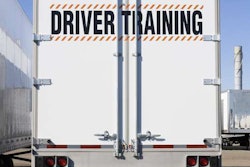 The California bill would require CDL applicants to perform 30 hours of behind the wheel training before receiving their CDL.
The California bill would require CDL applicants to perform 30 hours of behind the wheel training before receiving their CDL.California is considering a measure that would require 30 hours of driving for a Class A CDL and 15 hours for a Class B license.
State Sen. Bill Monning introduced SB 158 on Jan. 19, which also incorporates the Federal Motor Carrier Safety Administration’s final rule for CDL minimum training standards. The Democrat legislator’s bill implements a 2012 federal mandate that CDL applicants complete a certified instruction course before receiving the license.
The bill calls for 30 hours of behind-the-wheel training, requiring 10 hours at an off-highway facility and 10 hours must be on public roads. A Class B license calls for 15 hours of driving training, of which 7 must be on public roads. It also mandates that the state comply with the federal rule by Feb. 7, 2020.
The bill’s introduction notes a 2014 Highway 17 accident, when a trucker crashed into 10 cars, injuring seven and killing one. The driver’s lack of adequate training and experience was determined to be major contributors to the crash. That year, California reported 10,062 at-fault commercial vehicle collisions, of which 2,432 resulted in injury and 68 were fatal.
In December, FMCSA published a final rule establishing comprehensive national minimum training standards for entry-level commercial truck and bus operators seeking to obtain a commercial driver’s license (CDL) or certain endorsements.
The rulemaking was mandated by Congress in the Moving Ahead for Progress in the 21st Century Act.
The rule requires no minimum number of hours of behind-the-wheel training for applicants seeking a CDL, but training providers must determine that each CDL applicant demonstrates proficiency in all required elements of the training in order to successfully complete the program. The rule’s first draft, released last May by FMCSA, did call for 30 hours of behind-the-wheel training. The agency removed the requirement in the rule’s final version. OOIDA and safety advocate groups have asked FMCSA to restore the 30-hour requirement to its rule.
The entry-level driver training rule was slated to go into effect on February 6, 2017, with a compliance date of February 2020. However, a recent order by President Trump — telling agencies to halt all rulemakings, including those published but not yet effective — could delay the rule’s effective date and compliance date.










